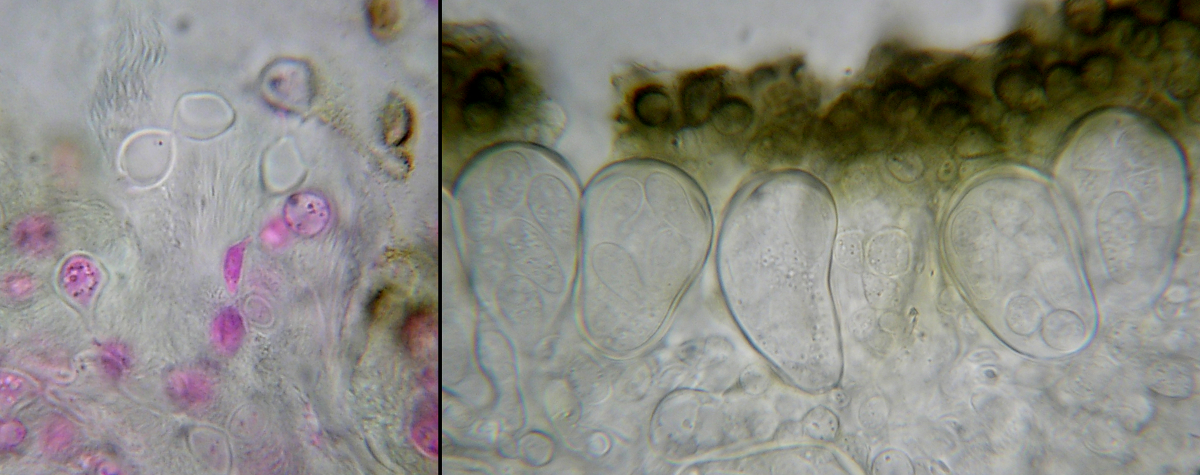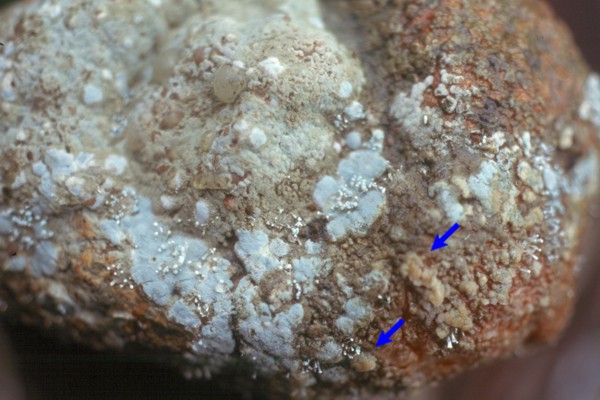Home >> Diversity and classification >> True fungi >> Dikarya >> Ascomycota >> Pyrenomycetes >> Dothideomycetes >> Myriangiales
THE MYRIANGIALES
The Myriangiales are not perithecial in the usual sense and might be sought among the discomycetes, particularly the Lichen-forming Discomycetes. However their peculiar hamathecium made up of the tissues of the ascoma clearly places them outside that group where all the species have pseudoparaphyses or paraphysoids.

The picture above shows a dead branch of balsam fir with its needles colonized by fungi. This is a typical situation when this plant dies; a variety of different fungi begin the appear on the upper and lower side of the needles. Some of the fungi are undoubtedly endophytes that were inside the needles when they were alive while others are saprotrophs that came in after the branch died. The red arrow points to an ascoma of Seuratia millardetii, one of the Myriangiales occupying such habitats from boreal forests all the way to the equatorial tropics. The middle panel shows that its ascomata do not resemble perithecia at all and in fact do not look like those of any other fungi but species of Seuratia. These fungi are easy to find if you collect in humid forests. If the branches are dry you may wish to soak them in water for a few minutes to allow the ascomata to rehydrate. The right panel is a closeup of the ascoma with light areas indicating the presence of asci.

The next set of pictures show more details of a species of Seuratia, perhaps also S. millardetii, found on a dead branch of mountain ash (Sorbus decora). The left panel shows the structure of the ascoma, with its bead-like hyphae embedded in a stringy gel. It is this unusual kind of tissue that allows S. millardetii to rehydrate rapidly when the humidity becomes high. The right panel shows a group of asci. Note that their upper walls are strongly thickened. Of importance to us is the hamathecium, the tissue between the asci. In species of Seuratia this is just more of the beaded hyphae. No other kinds of tissue is present. Because the tissue between the asci is the same as that found in the ascomata where there are no asci we can conclude that this fits the type of hamathecium typical of the Myriangiales.

Elsinoë is genus of Myriangiales producing irregularly lobed ascomata on plants. The picture at left shows a feral orange found in Costa Rica that is covered with fungi. The green and blue areas are species of Penicillium. The pale yellowish masses indicated by the blue arrows are ascomata of Elsinoë fawcettii, a common pest of oranges in warm climates. Ascomata of Elsinoë are composed of a loose lightly-coloured tissue surrounding scattered asci.